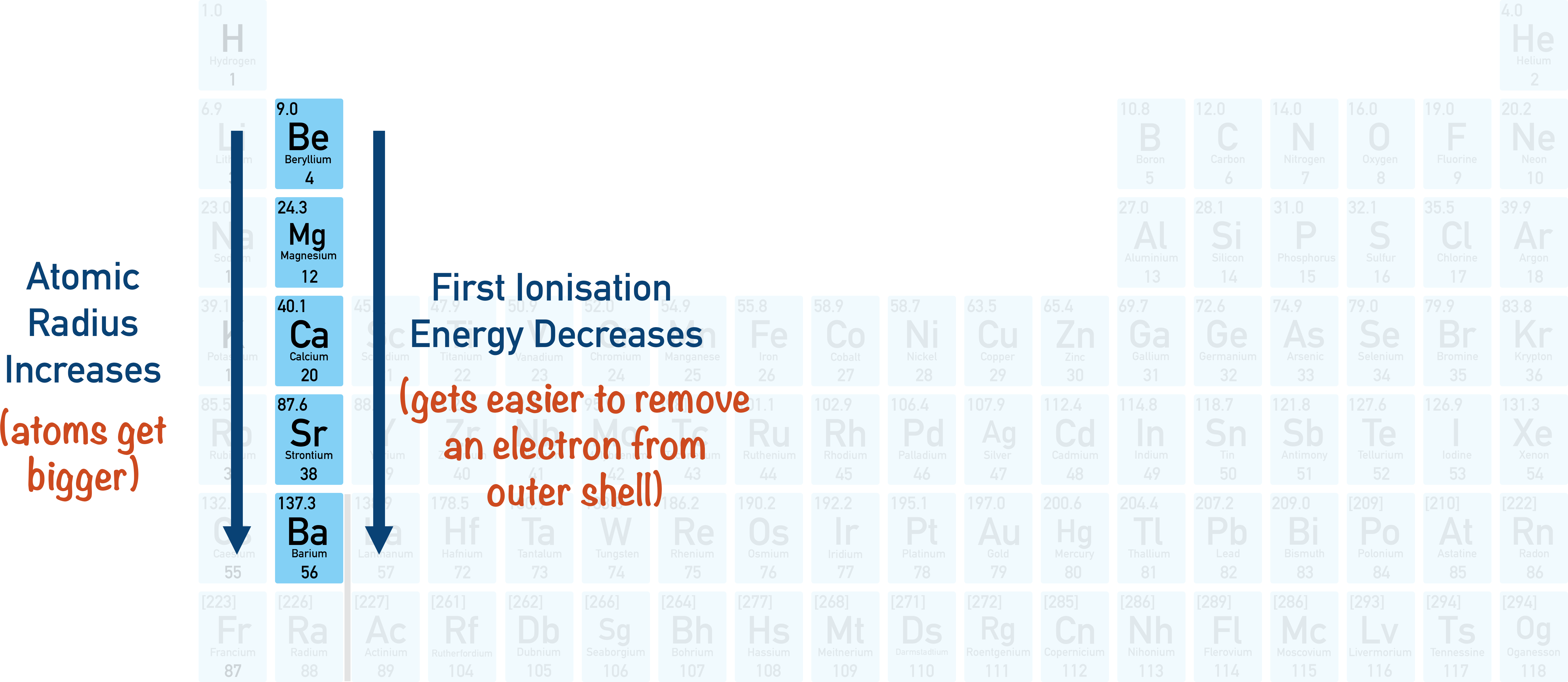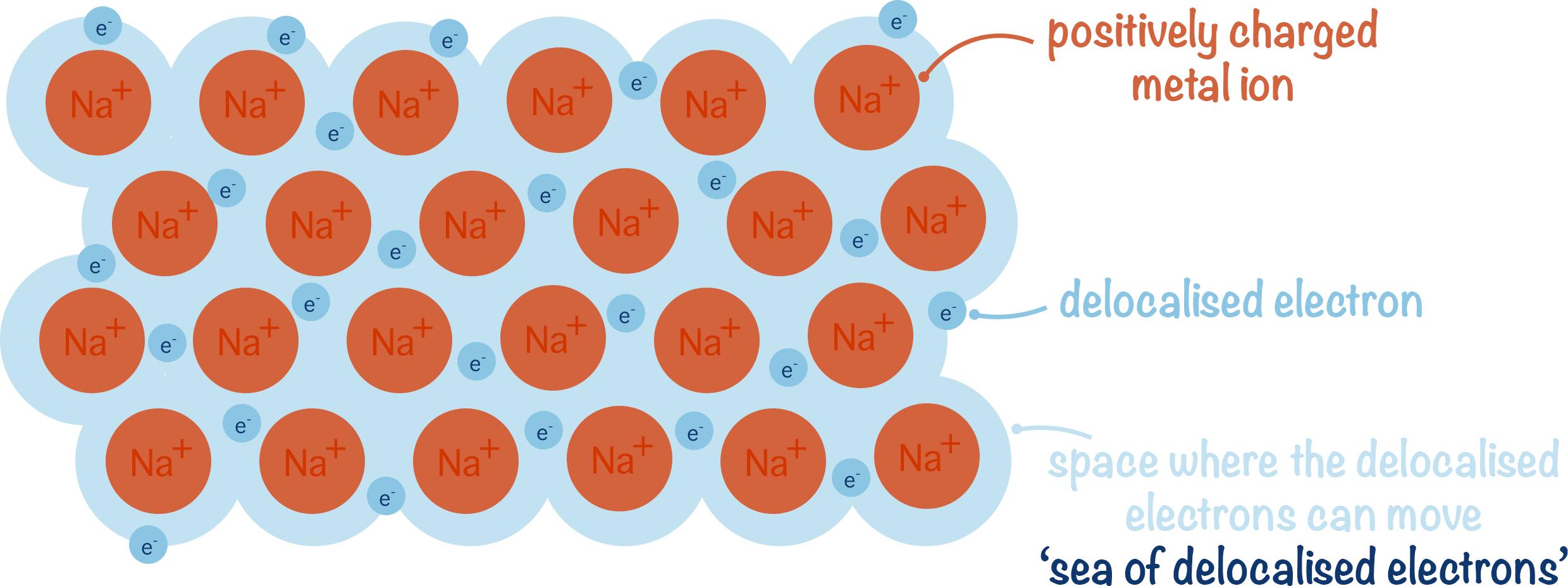Quick Notes Group 2 Metals
- Metals in group 2 of the periodic table are called the alkaline earth metals.
- Down group 2, atomic radius increases.
- Down group 2, first ionisation energy decreases.
- As a trend, melting point decreases down the group (magnesium is an exception).
Full Notes Group 2 Metals
Metals in group 2 of the periodic table are called the alkaline earth metals.
As you go down group 2, atomic radius increases.
As you go down group 2, first ionisation energy decreases.

As you go down group 2, melting point (as a trend) decreases.
| Metal | Melting Point |
|---|---|
| Berylium, Be | 1287oC |
| Magnesium, Mg | 649oC |
| Calcium, Ca | 839oC |
| Strontium, Sr | 769oC |
| Barium, Ba | 725oC |
The group 2 metals are held together by metallic bonding. The strength of a metallic bond is based on the strength of attraction between positive metal ions (cations) and delocalised electrons that exist around the ions.

The below explanation is a simplification to justify the trend. For reasons beyond the scope of A-level Chemistry there are exceptions, but the following ‘works’ for A-level standard.
As you go down group 2, atoms increase in size (see above), so the positively charged ions involved in the metallic bonding also increase in size. As a result, the surface of the ion is further away from the nucleus. Due to greater shielding from the inner electrons, the positive charge (2+) from the nucleus is not felt as strongly on the surface of the ion; there is a weaker attraction between the positive metal ion and the delocalised electrons (see Metallic Bonding). Because weaker attractions require less energy to break, melting points decrease as you go down the group.
Note, magnesium is an exception to this rule due to a change in its crystal (solid) structure compared to the other metals in group 2, resulting in a differing strength of attraction between ions within the metallic structure.
